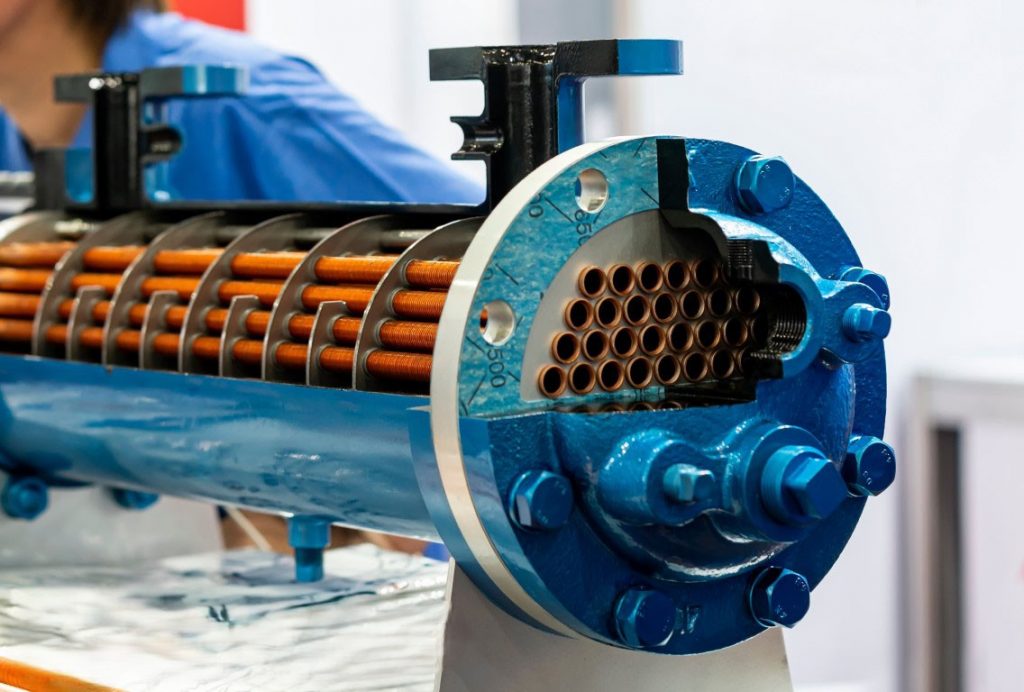Heat exchangers are vital devices used across various industries to transfer heat between two or more fluids without mixing them. They play a crucial role in maintaining optimal operating temperatures, improving energy efficiency, and ensuring process stability in heating, cooling, and energy recovery applications. Found in industries such as HVAC, power generation, chemical processing, food and beverage, oil and gas, and refrigeration, heat exchangers help in reducing energy consumption and improving overall system performance.
The primary function of a heat exchanger is to transfer heat from a hotter medium to a cooler medium, ensuring effective temperature control. They are designed to operate efficiently under different conditions, including high temperatures, high pressures, and corrosive environments. Based on their design and application, heat exchangers come in various types, including shell and tube, plate, air-cooled, and finned tube heat exchangers.
Types of Heat Exchangers
Shell and Tube Heat Exchangers – Consist of a bundle of tubes enclosed within a shell, allowing heat exchange between two fluids. Suitable for high-pressure and high-temperature applications, commonly used in power plants and chemical processing.
Plate Heat Exchangers – Made of multiple thin plates stacked together, providing a large surface area for efficient heat transfer. Compact and commonly used in HVAC, food processing, and pharmaceutical industries.
Air-Cooled Heat Exchangers – Use ambient air to dissipate heat from process fluids, eliminating the need for water. Ideal for power plants, petrochemical industries, and locations with water scarcity.
Finned Tube Heat Exchangers – Feature extended surface area with fins to enhance heat transfer efficiency. Used in automotive cooling, HVAC systems, and aerospace applications.
Brazed Plate Heat Exchangers – A compact and highly efficient design with fully brazed plates for better thermal conductivity. Commonly found in refrigeration, heat pumps, and industrial cooling systems.
Double-Pipe Heat Exchangers – A simple system where one fluid flows inside a pipe and another fluid flows around it. Suitable for small-scale applications with moderate heat transfer needs.
Advantages of Heat Exchangers
High Energy Efficiency – Heat exchangers improve energy efficiency by transferring heat effectively between fluids, reducing energy consumption. They enable heat recovery in various industrial processes, minimizing waste and optimizing thermal performance.
Compact Design – Many modern heat exchangers, such as plate heat exchangers and finned tube exchangers, are designed to be space-efficient. Their compact size makes them ideal for applications where installation space is limited, such as HVAC systems and marine industries.
Cost-Effective Operation – By enhancing heat transfer efficiency and reducing energy losses, heat exchangers lower operational costs. Industries benefit from reduced fuel and electricity consumption, leading to long-term savings and improved profitability.
Durability and Longevity – Heat exchangers are built with robust materials such as stainless steel, copper, titanium, and corrosion-resistant alloys. These materials ensure durability and withstand extreme temperatures, pressures, and harsh environments, prolonging the equipment’s lifespan.
Versatility in Applications – Available in various types and designs, heat exchangers are adaptable to different industries, including power generation, chemical processing, oil refining, refrigeration, and food production. Their flexibility makes them suitable for diverse thermal management requirements.
